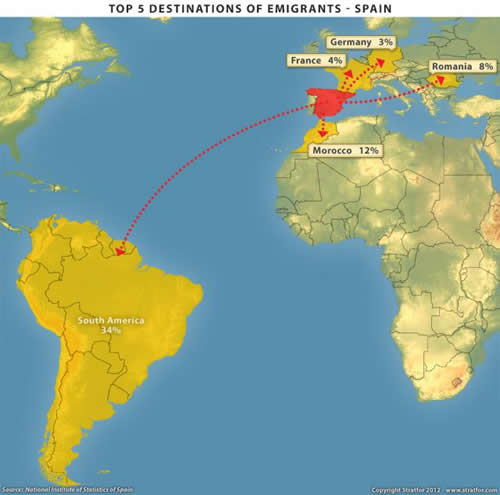|
JOHN RUBINO'SLATEST BOOK |
|||||||||||||||||||||||||||||||||||||||||||||||||||||||||||||||||||||||||||||||||||||||||||||||||||||||||||||||||||||||||||||||||||||||||||||||||||||||||||||||||||||||||||||||||||||||||||||||||||||||||||||||||||||||||||||||||||||||||||||
"Currency Wars "
|
�
"SULTANS OF SWAP" archives open ACT II ACT III ALSO Sultans of Swap: Fearing the Gearing! Sultans of Swap: BP Potentially More Devistating than Lehman! |
�
"EURO EXPERIMENT"
archives open EURO EXPERIMENT :� ECB's LTRO Won't Stop Collateral Contagion!
EURO EXPERIMENT: |
�
"INNOVATION"
archives open |
�
"PRESERVE & PROTE CT"
archives open |
�

�
�
�
Thurs. Jan. 30th, 2014
MACRO WATCH Q1 2014
NOW AVAILABLE - SUBSCRIBE
�
�
�
| � | � | � | � | � |
| JANUARY | ||||||
| S | M | T | W | T | F | S |
| � | � | � | 1 | 2 | 3 | 4 |
| 5 | 6 | 7 | 8 | 9 | 10 | 11 |
| 12 | 13 | 14 | 15 | 16 | 17 | 18 |
| 19 | 20 | 21 | 22 | 23 | 24 | 25 |
| 26 | 27 | 28 | 29 | 30 | 31 | � |
| �� Complete Archives � |
||||||
KEY TO TIPPING POINTS |
| 1 - Risk Reversal |
| 2 - Japan Debt Deflation Spiral |
| 3- Bond Bubble |
| 4- EU Banking Crisis |
| 5- Sovereign Debt Crisis |
| 6 - China Hard Landing |
| � |
| 7 - Chronic Unemployment |
| 8 - Geo-Political Event |
| 9 - Global Governance Failure |
| 10 - Chronic Global Fiscal ImBalances |
| 11 - Shrinking Revenue Growth Rate |
| 12 - Iran Nuclear Threat |
| 13 - Growing Social Unrest |
| 14 - US Banking Crisis II |
| 15 - Residential Real Estate - Phase II |
| 16 - Commercial Real Estate |
| 17 - Credit Contraction II |
| 18- State & Local Government |
| 19 - US Stock Market Valuations |
| � |
| 20 - Slowing Retail & Consumer Sales |
| 21 - China - Japan Regional Conflict |
| 22 - Public Sentiment & Confidence |
| 23 - US Reserve Currency |
| 24 - Central & Eastern Europe |
| 25 - Oil Price Pressures | 26 - Rising Inflation Pressures & Interest Pressures |
| 27 - Food Price Pressures |
| 28 - Global Output Gap |
| 29 - Corruption |
| 30 - Pension - Entitlement Crisis |
| � |
| 31 - Corporate Bankruptcies |
| 32- Finance & Insurance Balance Sheet Write-Offs |
| 33 - Resource Shortage |
| 34 - US Reserve Currency |
| 35- Government Backstop Insurance |
| 36 - US Dollar Weakness |
| 37 - Cyber Attack or Complexity Failure |
| 38 - Terrorist Event |
| 39 - Financial Crisis Programs Expiration |
| 40 - Natural Physical Disaster |
| 41 - Pandemic / Epidemic |
�
Reading the right books?
No Time?
![]()
We have analyzed & included
these in our latest research papers!
![]()
Book Review- Five Thumbs Up
for Steve Greenhut's
Plunder!
�
 TODAY'S TIPPING POINTS
TODAY'S TIPPING POINTS 
| THIS WEEKS TIPPING POINTS | MACRO NEWS | MARKET | 2013 THEMES |
�
ECHO BOOM
It Starts in the Peripherals and Works toward the Core
"BEST OF THE WEEK " |
Posting Date |
Labels & Tags | TIPPING POINT or 2013 THESIS THEME |
HOTTEST TIPPING POINTS |
� | � | Theme Groupings |
| � | � | � | |
We post throughout the day as we do our Investment Research for: LONGWave - UnderTheLens - Macro |
� | � | � |
| THESIS & THEMES | � | � | � |
ECHO BOOM - Commodity Prices and YEN Impact Peripherals Falling Commodity Prices
Yen Connection Both Venezuela (socialist worker's paradise) and Argentina (nationalist socialist paradise) have a problem with their foreign exchange reserves. In both cases it stems from trying to keep up the pretense that their currencies are worth more than they really are. No US Hyperinflation
Babacan said the central bank was taking the necessary steps to deal with the situation, and said Turkey was protected against the swings in the market by its sound finances. Turkey-Greece Connection
According to Gavekal, as quoted by ZeroHedge ...
|
01-30-14 | THEME ECHO BOOM |
ECHO BOOM |
ECHO BOOM - What Blows Up First; Subprime Countries What Blows Up First? Part 3: Subprime Countries 01-27-14 John Rubino One of the reasons the rich countries’ excessive money creation hasn’t ignited a generalized inflation is that today’s global economy is, well, global. When the Fed dumps trillions of dollars into the US banking system, that liquidity is free to flow wherever it wants. And in the past few years it has chosen to visit Brazil, China, Thailand, and the rest of the developing world. This tidal wave of hot money bid up asset prices and led emerging market governments and businesses to borrow a lot more than they would have otherwise. Like the recipients of subprime mortgages in 2006, they were seduced by easy money and fooled into placing bets that could only work out if the credit kept flowing forever. Then the Fed, spooked by nascent bubbles in equities and real estate, began to talk about scaling back its money printing*. The hot money started flowing back into the US and out of the developing world. And again just like subprime mortgages, the most leveraged and/or badly managed emerging markets have begun to implode, threatening to pull down everyone else. A sampling of recent headlines: Contagion Spreads in Emerging Markets as Crises Grow Investors Flee Developing World Erosion of Argentine Peso Sends a Shudder Through Latin America The Entire World is Unraveling Before Our Eyes Chinese Debt Debacle Supports Soros’ ‘Eerie’ Portrayal Venezuela Enacts “Law of Fair Prices” Argentina Returns to Villa Miseria Indian Rupee Falls to 2-Month Low; Joins Emerging Market Sell-Off Turkey’s ‘Embarrassing’ Intervention Fails to Curb Lira Sell-Off Prudent Bear’s Doug Noland as usual gets it exactly right in his most recent Credit Bubble Bulletin. Here are a few excerpts from a much longer article that should be read by everyone who wants to understand the causes and implications of the emerging-market implosion:
The crucial point here is that this crisis is not a case of one or two little countries screwing up. It’s everywhere, from Latin America to Asia to Eastern Europe. Each country’s problems are unique, but virtually all can be traced back to the destabilizing effects of hot money created by rich countries attempting to export their debt problems to the rest of the world. ZIRP, QE and all the rest succeeded for a while in creating the illusion of recovery in the US, Europe and Japan, but now it’s blow-back time. The mess we’ve made in the subprime countries will, like rising defaults on liar loans and interest-only mortgages in 2007, start moving from periphery to core. As Noland notes:
To summarize: Last but not least, individuals and pension funds in the developed world have invested hundreds of billions of dollars in emerging market stock and bond funds, which are now looking like huge year-ahead losers. The global balance sheet, in short, is about to get a lot more fragile. So, just as pretty much everyone in the sound money community predicted, tapering will end sooner rather than later when a panicked Fed announces some kind of bigger and better shock-and-awe debt monetization plan. The European Central Bank, which actually shrank its balance sheet in 2013, will reverse course and start monetizing debt on a vast scale. As for Japan, who knows what they can get away with, since their government debt is, as a percentage of GDP, already twice that of the US. The real question is not whether more debt monetization is coming, but whether it will come soon enough to preserve the asset price bubbles that are right this minute being punctured by the emerging market implosion. If not, it really is 2008 all over again. * “Money printing” in this case refers to currency creation in all its forms, electronic and physical. |
01-30-14 | THEME ECHO BOOM |
ECHO BOOM |
MOST CRITICAL TIPPING POINT ARTICLES THIS WEEK - January 26th - February 1st | � | � | � |
| RISK REVERSAL | � | � | 1 |
| JAPAN - DEBT DEFLATION | � | � | 2 |
| BOND BUBBLE | � | � | 3 |
EU BANKING CRISIS |
� | � | 4 |
| SOVEREIGN DEBT CRISIS [Euope Crisis Tracker] | � | � | 5 |
| CHINA BUBBLE | � | � | 6 |
CHINA A CLASSIC DOWNWARD "CONTINUATION" PATTERN
|
01-28-14 | CHINA � -PATTERNS |
6 - China Hard Landing |
| TO TOP | |||
| MACRO News Items of Importance - This Week | |||
GLOBAL MACRO REPORTS & ANALYSIS |
� | � | � |
 |
01-27-04 | EU GREECE | MACRO |
US ECONOMIC REPORTS & ANALYSIS |
� | � | � |
FOR THOSE WHO ENJOYED LAST NIGHT'S ENTERTAINEMENT |
01-29-14 | STATE OF THE UNION US POLITICAL POLICY |
US ECONOMICS |
STATE OF THE UNION - I Have a Dream!
and in headlines...
The 12 Key Executive actions... The President’s top priority remains ensuring middle class Americans feel secure in their jobs, homes and budgets. To build real, lasting economic security the President will work with Congress and act on his own to expand opportunity for all so that every American can get ahead and have a shot at creating a better life for their kids. Middle Class Security & Opportunity at Work Raising the Minimum Wage through Executive Order to $10.10 for Federal Contract Workers. The President will also continue to urge Congress to raise the minimum wage to $10.10 across the nation because no one who works full-time should have to raise their family in poverty. Creating “myRA” – A New Starter Savings Account to Help Millions Save for Retirement. The President will take executive action to create a simple, safe and affordable “starter” retirement savings account available through employers to help millions of Americans save for retirement. This savings account would be offered through a familiar Roth IRA account and, like savings bonds, would be backed by the U.S. government. Building a 21st Century Workplace for America’s Working Families. The President will host a summit on Working Families to highlight the policies that will ensure America’s global economic competitiveness by supporting working families; showcase companies doing exemplary work in this space; and highlight model laws and policies from cities and states across the country in areas such as discrimination, flexibility and paid leave. Jobs & Economic Opportunity Launching Four New Manufacturing Institutes in 2014. American manufacturers are adding jobs for the first time in over a decade. To build on this progress, the President will launch four new institutes through executive action this year. These institutes will build on the four the President has already announced. Government-wide Review of Federal Training Programs to Help Americans Get Skills in Demand for Good Jobs. The President is directing the Vice President to conduct a full review of our federal job-training system to make sure programs are higher performing and driven by the needs of employers which are hiring so that they lead to well-paying jobs. In the coming months, we will help community colleges build partnerships with businesses so that as industries’ skills needs change community colleges can quickly adapt. Partnering With Many of America’s Leading CEOs to Help the Long-Term Unemployed. Later this week, as part of an ongoing effort that the Administration began several months ago, the President will convene a group of CEOs and other leaders around supporting best practices for hiring the long-term unemployed. Expanding Apprenticeships by Mobilizing Business, Community Colleges and Labor. This year the President will mobilize business leaders, community colleges, Mayors and Governors, and labor leaders to increase the number of innovative apprenticeships in America. Increasing Fuel Efficiency for Trucks. The President will propose new incentives for medium- and heavy-duty trucks that run on alternative fuels like natural gas and the infrastructure needed to deploy them, and the Administration will set new fuel efficiency standards for heavy duty vehicles. Partnering with States, Cities and Tribes to Move to Energy Efficiency and Cleaner Power. The President has directed his Administration to work to cut carbon pollution through clean energy and energy efficiency. Schools & Education Opportunity Connecting 20 Million Students in 15,000 Schools to the Best Technology to Enrich K-12 Education. The FCC is making a major down-payment on the President’s ConnectED goal of connecting 99% of students to next-generation broadband and wireless technology within five years. In the coming weeks the President will announce new philanthropic partnerships – including by companies like Apple, Microsoft, Sprint and Verizon. Redesigning High Schools to Teach the Real-World Skills That Kids Need. This year, the Administration will announce the winners of a $100 million competition supporting redesigned high schools that give high school students access to real-world education and skills. Increasing College Opportunity and Graduation. Building on the success of the President and First Lady’s College Opportunity Summit, in the coming months the President is asking colleges and universities, nonprofits and businesses to work with him on ways to improve students’ access to and completion of higher education. And a key paragraph for all (even Tom Perkins?)...
Ron Paul sums it up... � |
01-29-14 | US PUBLIC POLICY | US ECONOMICS |
US Household Net Worth Growth Keeping the Illusion Going through Asset Inflation |
01-29-14 | US OVERVIEW | US ECONOMICS |
| CENTRAL BANKING MONETARY POLICIES, ACTIONS & ACTIVITIES | � | � | � |
| � | � | � | |
| Market | |||
| TECHNICALS & MARKET | � |
� | � |
NOW THIS IS A CRASH!! |
01-28-14 | STUDY | |
� DON'T BE CONCERNED - YET! TEXT BOOK LOG-PERIODIC CYCLE ENDS - Right on Schedule
OUR NOVEMBER 25TH POST CALLING FOR SANTA CLAUS RALLY
OUR DECEMBER 24TH POST CALLING FOR JANUARY 14TH TURN
WHAT IS NEXT NOW WATCH FOR THE SMALL "M' TOP - As DR (Real Deflation) Begins BELOW: FROM OUR DECEMBER CALL OF A 'AFTER JANUARY 14th TURN' - High was January 15th BE PATIENT - Wait for Death Cross
MID-TERM ELECTION YEAR SUPPORTS THE ABOVE OUTSIDE SMALL "M" STRENGTH
� � |
01-28-14 | PATTERNS | |
| COMMODITY CORNER - HARD ASSETS | � | PORTFOLIO | � |
| COMMODITY CORNER - AGRI-COMPLEX | � | PORTFOLIO | � |
| SECURITY-SURVEILANCE COMPLEX | � | PORTFOLIO | � |
| � | � | � | |
| THESIS Themes | |||
| 2014 - GLOBALIZATION TRAP | � | � | � |
2013 - STATISM |
� | � | � |
2012 - FINANCIAL REPRESSION |
� | � | � |
Obama Introduces MyRA: The "No Risk, Guaranteed Return" Retirement Savings Bond 01-28-14 Zerp Hedge Presenting: the MyRA, and since it offers "guaranteed return and no risk" we now know where all the Fed's bond trades will go to work once QE ends. From the president:
Or put another way - if you like your retirement account you can keep your retirement account. And just like that, the "automatic" continuity to the Fed's Quantitative Easing is ensured.
Here’s the deal he’s offering: you give Sam your hard-earned retirement savings. Sam will invest your funds, and pay you a rate of return. Granted, the rate of return he’s promising doesn’t quite keep up with inflation. So you will be losing some money. But don’t dwell on that too much. And, rather than invest your funds in productive assets, Sam is going to blow it all on new cars and flat screen TVs. So when it comes time to make interest payments, Sam won’t have any money left. But don’t worry, he still has that good ole’ credibility. So even though his financial situation gets worse by the year, Sam will just go back out there and borrow more money from other people to pay you back. Of course, he will be able to keep doing this forever without any consequences whatsoever. I know what you’re thinking– “where do I sign??” I know, right? It’s the deal of the lifetime. This is basically the offer that the President of the United States floated last night. And like an unctuously overgeled used car salesman, he actually pitched Americans on loaning their retirement savings to the US government with a straight face, guaranteeing “a decent return with no risk of losing what you put in. . .” This is his new “MyRA” program. And the aim is simple– dupe unwitting Americans to plow their retirement savings into the US government’s shrinking coffers. We’ve been talking about this for years. I have personally written since 2009 that the US government would one day push US citizens into the ‘safety and security’ of US Treasuries. Back in 2009, almost everyone else thought I was nuts for even suggesting something so sacrilegious about the US government and financial system. But the day has arrived. And POTUS stated almost VERBATIM what I have been writing for years. The government is flat broke. Even by their own assessment, the US government’s “net worth” is NEGATIVE 16 trillion. That’s as of the end of 2012 (the 2013 numbers aren’t out yet). But the trend is actually worsening. In 2009, the government’s net worth was negative $11.45 trillion. By 2010, it had dropped to minus $13.47 trillion. By 2011, minus $14.78 trillion. And by 2012, minus $16.1 trillion. Here’s the thing: according to the IRS, there is well over $5 trillion in US individual retirement accounts. For a government as bankrupt as Uncle Sam is, $5 trillion is irresistible. They need that money. They need YOUR money. And this MyRA program is the critical first step to corralling your hard earned retirement funds. At our event here in Chile last year, Jim Rogers nailed this right on the head when he and Ron Paul told our audience that the government would try to take your retirement funds: � I don’t know how much more clear I can be: this is happening. This is exactly what bankrupt governments do. And it’s time to give serious, serious consideration to shipping your retirement funds overseas before they take yours. Obama, Treasury detail new MyRA savings plan 01-29-14 Pensions & Investments President Barack Obama directed the Treasury Department on Wednesday to create the “MyRA” retirement savings bond program mentioned in his State of the Union address Tuesday night to reach low- and middle-income workers and others not saving for retirement. “This is a starter IRA,” said a senior administration official on a background press call. Treasury officials said on the call that they will launch a pilot program by the end of 2014 with employers opting to participate. Employers would not administer or contribute to the accounts, and there would be “little to no cost” to them, administration officials said. The federal government will pay an agent selected through a competitive process to administer the program. The savings account would be offered as
“We currently have a system that is not doing what it is supposed to,” said a different senior administration official, who noted that 50% of all full-time workers and 75% of part-time workers are not saving for retirement. “The proposal today is very much pitched at bringing new people in and is based on economic research that what you need is something simple, safe, secure and easy to set up through an employer,” the official said. |
01-29-14 | THESIS | |
2011 - BEGGAR-THY-NEIGHBOR -- CURRENCY WARS |
� | � | � |
2010 - EXTEND & PRETEND |
� | � | � |
| THEMES | |||
| FLOWS -FRIDAY FLOWS | � | � | � |
| SHADOW BANKING -LIQUIDITY / CREDIT ENGINE | � | � | � |
| CRACKUP BOOM - ASSET BUBBLE | � | � | � |
| ECHO BOOM - PERIPHERAL PROBLEM | � | � | � |
| PRODUCTIVITY PARADOX -NATURE OF WORK | � | � | � |
| SECURITY-SURVEILLANCE COMPLEX -STATISM | � | � | � |
| GLOBAL FINANCIAL IMBALANCE - FRAGILITY, COMPLEXITY & INSTABILITY | � | � | � |
| CENTRAL PLANINNG -SHIFTING ECONOMIC POWER | � | � | � |
| STANDARD OF LIVING -EMPLOYMENT CRISIS | � | � | � |
Youth, Unemployed and Discouraged Leaving Spain Early Signs of What Lies Ahead?
|
01-27-14 | EU - SPAIN | STANDARD OF LVING |
| CORPORATOCRACY -CRONY CAPITALSIM | � | � | � |
CORRUPTION & MALFEASANCE -MORAL DECAY - DESPERATION, SHORTAGES.. |
� | � | � |
| SOCIAL UNREST -INEQUALITY & A BROKEN SOCIAL CONTRACT | � | � | � |
| CATALYSTS -FEAR & GREED | � | � | � |
| GENERAL INTEREST | � |
� | � |
| TO TOP | |||
|
|||
Tipping Points Life Cycle - Explained
Click on image to enlarge
 ���
���
TO TOP
�
�
�
�
�� TO TOP
�
�
�


























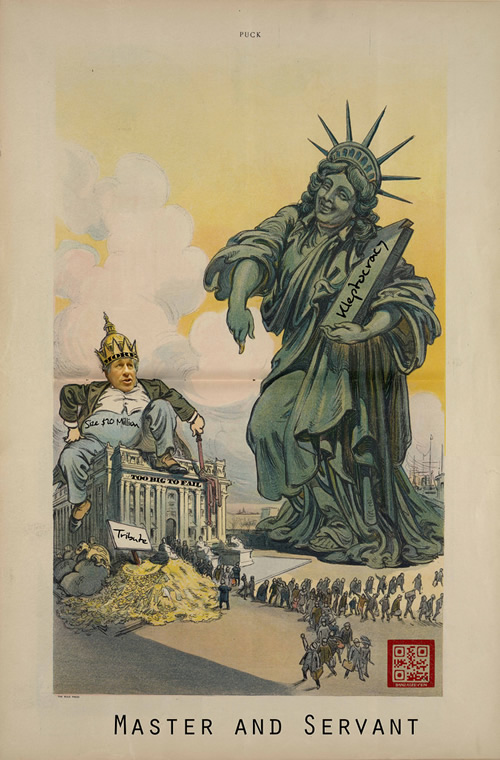

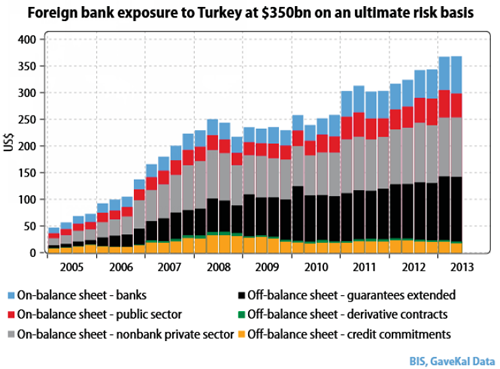



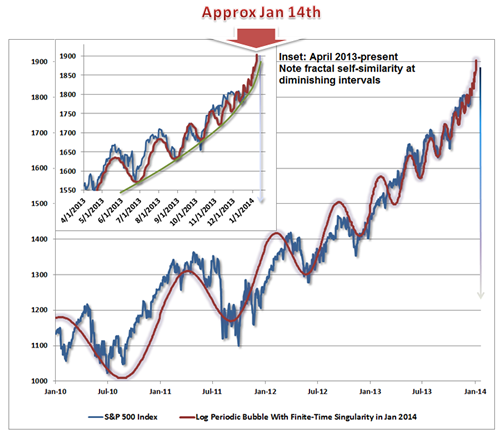

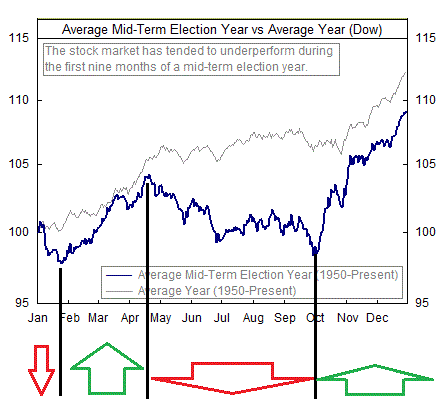

 IRA Confiscation: It's Happening
IRA Confiscation: It's Happening